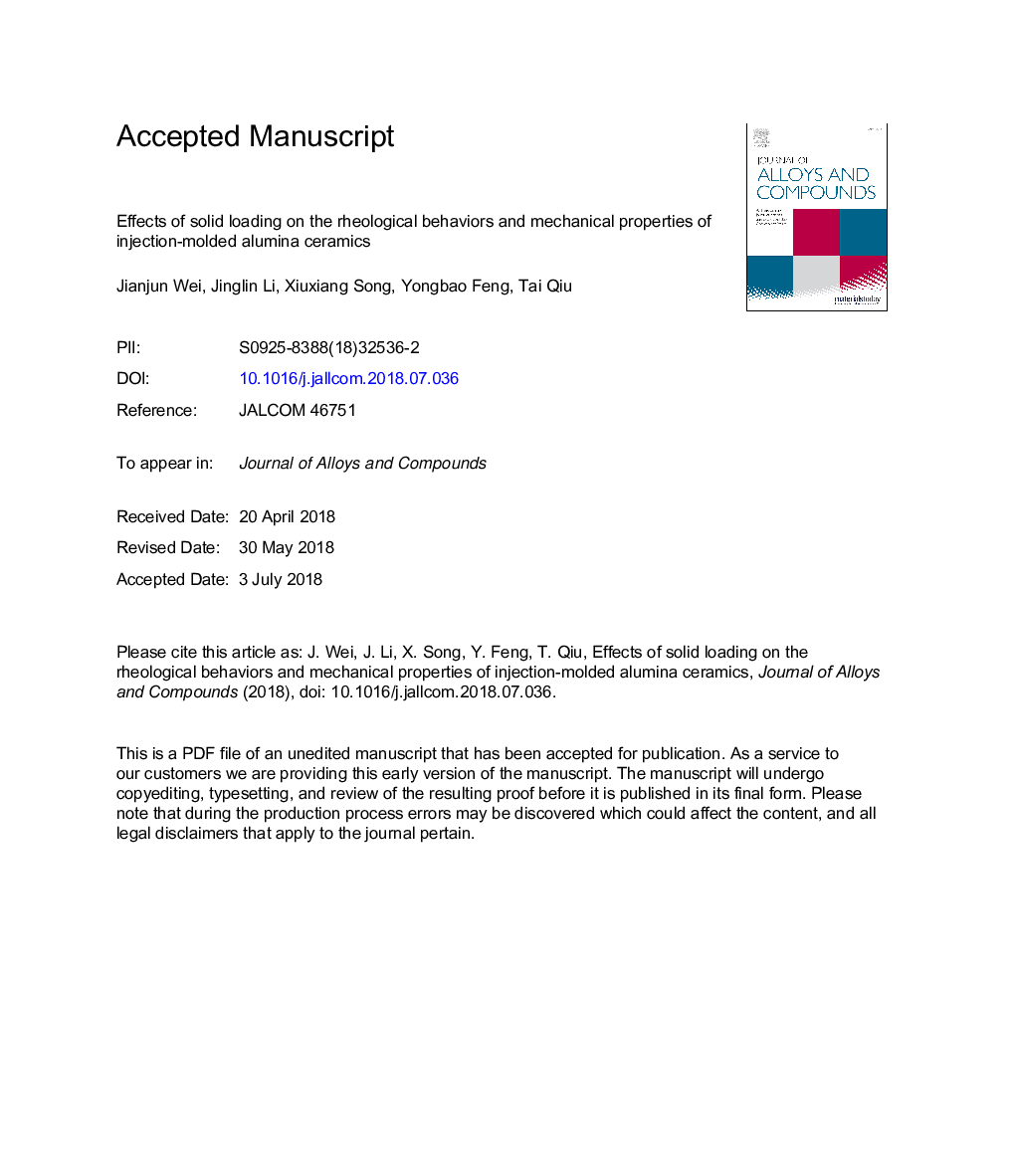| Article ID | Journal | Published Year | Pages | File Type |
|---|---|---|---|---|
| 7990194 | Journal of Alloys and Compounds | 2018 | 23 Pages |
Abstract
In this work, alumina ceramics were prepared by injection molding. The effects of solid loading on the rheological behaviors of the feedstocks, as well as the resulting properties of the green bodies and sintered ceramics were investigated. It was found that the viscosity and stabilized torque values of the feedstocks increased with the increase of solids loading in the range of 48-54â¯vol.%. The feedstock with 54â¯vol.% alumina exhibited dilatant rheology behavior and high viscosity; however, the feedstocks with less than 52â¯vol.% alumina exhibited pseudoplastic rheology behavior. After removing the organic binder, the pre-sintered bodies with high alumina content had smaller most frequent pore diameter, which was beneficial to sintering densification. With an increase in solid loading, the density of the green and sintered bodies increased and the shrinkage decreased. The green and sintered bodies at the solid loading of 52â¯vol.% presented uniform, compact microstructures, and possessed the highest bending strength of 25â¯MPa and 440â¯MPa, respectively.
Related Topics
Physical Sciences and Engineering
Materials Science
Metals and Alloys
Authors
Jianjun Wei, Jinglin Li, Xiuxiang Song, Yongbao Feng, Tai Qiu,
